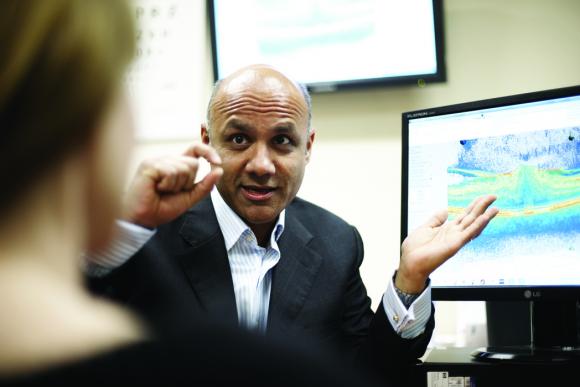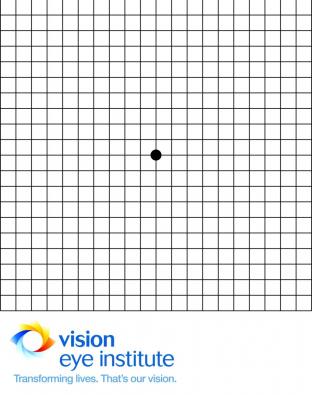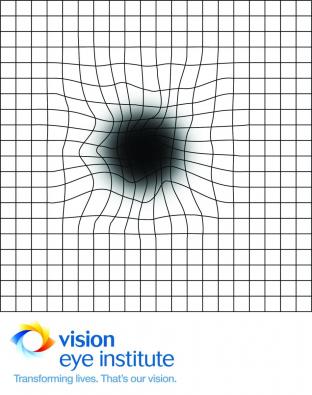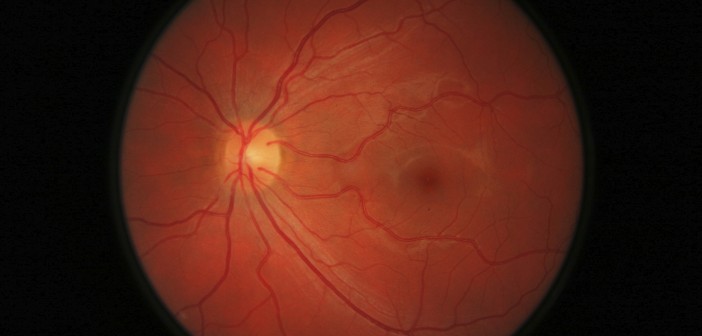Macular degeneration (MD) is the leading cause of blindness among people over 50 years of age. It involves the loss of core vision needed to read, drive and recognise faces.
However, many blokes still don’t know what symptoms to look out for, and some don’t even know that MD exists at all. That’s surprising when you see that the disease affects one in seven Australian’s over the age of 50, and is responsible for 48% of severe vision loss in Australia.
One specialist which focuses on dealing with MD is Vision Eye Institute, and they say that the treatment of the condition has come a long way in the past few years.
“For years we were in a position where specialists would simply have to watch patients go blind. However, a treatment was introduced in 2006 which could treat MD,” says Vision Eye Institute business partnerships manager Kylie Harris.
“MD is essentially an eye disease which affects the retinal tissue at the back of the eyes. It specifically affects the central vision, which is critical for you to be able to see properly.”
There are two forms of macular degeneration – wet and dry. There are a number of treatments to slow down, and in some cases, reverse, the effects of wet macular degeneration. However, there is currently no treatment for dry macular degeneration.
The wet form occurs when you develop unwanted blood vessels which then leak blood and serum into the central macular area. The distortion of vision is similar to spilling water in the middle of a photograph.

SYMPTOMS
There are a number of symptoms which could signal MD in its early stages, such as:
∫ Straight lines appearing wavy, distorted or bent.
∫ Difficulty reading, driving, or performing anything that requires fine vision.
∫ Distinguishing faces
∫ Dark patches or empty spaces appearing in the centre of your vision.
∫ Sensitivity to little or too much light, or poor colour judgement could also be a sign.
The Amsler Grid (as displayed on the next page) is an easy way to regularly test yourself. This ten second test simply requires you to look at the dot in the centre of the grid. If the surrounding lines appear wavy, missing or blurred, you must see an eyecare specialist immediately.
LIFESTYLE CHANGES CAN REDUCE YOUR RISK
Age is the single biggest risk factor for developing MD and it can often be hereditary. However, you can still take measures to reduce your chances of contracting MD with a few easy lifestyle changes.
∫ Eye tests. Have your eyes tested regularly, and make sure the ‘macula’ is checked.
∫ Stop smoking. After aging, smoking is the second biggest risk-factor with MD, so if you smoke you should quit immediately. Smokers are three times as likely to contract macular degeneration as non-smokers, and they are also likely to develop it at an earlier age.
∫ Eat well. Eat fish at least twice a week. You should also regularly eat green, leafy vegetables, blueberries, strawberries, yellow vegetables and nuts and seeds.
∫ Keep healthy. Maintain a generally healthy lifestyle – control your weight and exercise regularly.
TREATMENT
If you experience any of the aforementioned symptoms, it is important to seek advice from an eyecare professional as soon as possible. Early detection is critical.
“We always say that early treatment is essential – it can stop you from forming any scarring,” Kylie says. “This way, you’re more likely to keep your eyesight at a regular level and the negative affects can even be reversed.”
The treatment for wet macular degeneration varies. Although it is known to improve vision, its main aim is to stabilise and maintain the best vision for as long as possible.
A protein named vascular endothelial growth factor (VEGF) is chiefly responsible for the leaking and growth of the new blood vessels which causes macular degeneration.
To slow or stop this process, anti-VEGF drugs are injected into the eye. These are usually administered monthly at first, but injection frequency depends on the severity of the condition, and the measurable response to treatment.
First and foremost, Kylie says for most blokes (especially those over 50 and are most at-risk), it’s a case of keeping on top of your eye health and getting regular eye checks.
“A lot of guys think that because they get their eyes tested every two years, they’ll be fine. Unfortunately that’s just not the case. With macular degeneration you could be fine in June, but have macular degeneration by December,” she says.
“That’s the idea behind the Amsler Grid – it’s just one simple test – people can put it on their fridge, or somewhere in regular sight, and check their eyes periodically. If their vision changes, they know to go see their usual eyecare provider as soon as possible.
“The Amsler Grid is as much about spreading the message about macular degeneration as it is about taking the test. The more people that know about it, the more awareness there is, so there’s a better chance that it will get picked up at an early stage.”
THE 10 SECOND TEST THAT COULD SAVE YOUR EYESIGHT:
Rotary International has teamed up with Vision Eye Institute
to distribute Amsler Grids across Australia and raise awareness about MD.
The idea was hatched by Yea Rotary Club’s Jeannie Handsaker when she realised that her husband and club president, John Handsaker was experiencing vision troubles.
John thought he needed to update his glasses and being a typical male, he put it off until his condition worsened.
“Finally he confided to me that he couldn’t see my face and that’s when I knew he was in trouble,” Jeannie says.
“We were able to obtain a specialist appointment that day and he was diagnosed with macular degeneration.
“My friends all then rushed off to have their eyes checked and one came back with an Amsler grid. I thought to myself ‘this is such an easy way to check your eyes, and it can just sit on the fridge!’”
This was when the idea to distribute the Amsler grids was born.
With the help of Novartis, Macular Degeneration Foundation, Vision Eye Institute, Bayer, and event organizers Expertise Events, Rotary has been able to put 500,000 grids into the public arena and hopes to have saved many people’s eyesight as a result of this.
How to use the grid:
1. If you normally wear glasses to read, put them on.
2. Look at the first grid, setting yourself at your normal reading distance.
3. Cover one eye and look at the dot in the centre.
4. Without moving your eye off the dot, see whether any of the lines in the grid are wavy, missing or blurred (like the grid underneath). If this happens, please see your usual eyecare provider immediately.
5. Repeat with the other eye.







